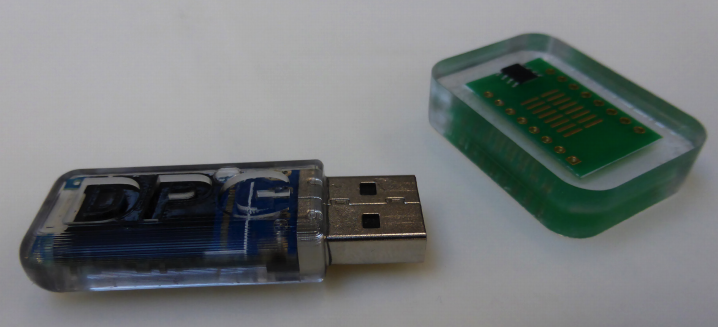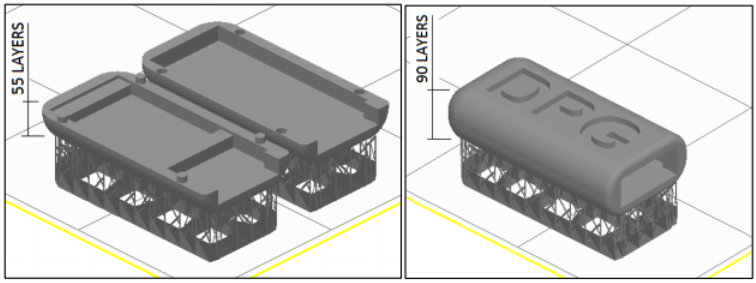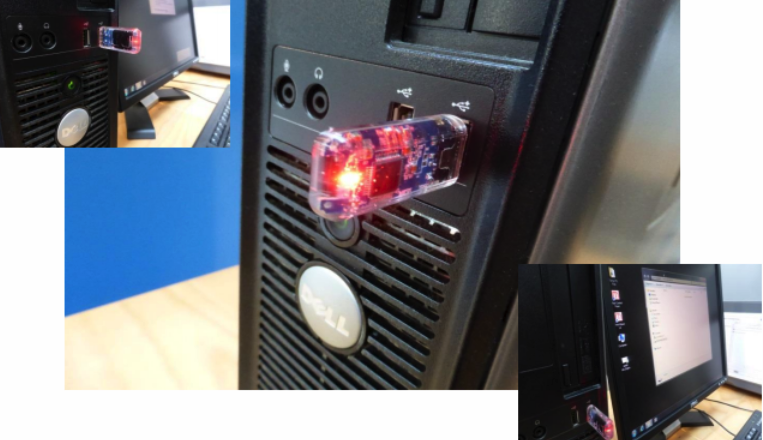 A lot has been made about the 3D printing of electronics. As 3D printing technology has progressed over the past couple of years, we have begun to see both 3D printers and 3D printing materials come to market which enable individuals to print parts of electronic devices — mostly conductive traces. However, while we are still probably years away, if not longer, from being able to 3D print entire working electronics from scratch, there are individuals and companies experimenting with ways to 3D print objects with electronics embedded within. We’ve seen this several times already with the use of FDM/FFF 3D printers, but now researchers from the Advanced Manufacturing Research Centre (AMRC), led by Mike Locking, have successfully shown that it is possible to embed electronics within SLA 3D printed objects as well.
A lot has been made about the 3D printing of electronics. As 3D printing technology has progressed over the past couple of years, we have begun to see both 3D printers and 3D printing materials come to market which enable individuals to print parts of electronic devices — mostly conductive traces. However, while we are still probably years away, if not longer, from being able to 3D print entire working electronics from scratch, there are individuals and companies experimenting with ways to 3D print objects with electronics embedded within. We’ve seen this several times already with the use of FDM/FFF 3D printers, but now researchers from the Advanced Manufacturing Research Centre (AMRC), led by Mike Locking, have successfully shown that it is possible to embed electronics within SLA 3D printed objects as well.
Researchers were able to create a working USB Flash (Pen) drive, which was encased using SLA 3D printing technology on a 3D Systems Projet 6000 printer. Basically how they accomplished this was by using 3D Systems’ 3DManage software to create an encasement for their flash drive components. This encasement, which typically would be 3D printed in two separate pieces, and then manually assembled in order to incorporate the electronics required to function, was instead modified using 3DManage to keep the part as one single unit, while removing the computer generated internal supports.
The internal supports are normally created for an object where there are overhangs of at least 36%, as these parts can not withstand gravity on their own. However, because the researchers were planning to insert the flash drive’s components during the print job, this allowed for the removal of the supports. The electronic components themselves could function as reliable support structures during the printing of the overhangs.
The print job for the flash drive encasing, which consisted of 90 3D printed layers, was paused after the 70th layer was finished printing. This allowed the researchers to insert the flash drive components, as it provided them with a 0.2mm clearance between the component and the top face of the void. Printing was then resumed and the job was complete.
“A clearance of 0.1 mm was applied to all sides of the part to ease insertion of the component,” the researchers at AMRC explain. “Once the component is in place, the build resumes. The 0.1 mm and 0.2 mm clearance gaps around the component will be filled with uncured epoxy resin, which remains uncured until the post-processing operation of fully curing the part in the UV chamber. Prior to fully curing other essential post-processing work includes cleaning the part and removing support material”
Once completely printed and cured, the USB drive was inserted into a PC to test its functionality. The results? A complete success!
While, this may not seem all that impressive, the idea behind it could open up a lot of doors for SLA 3D printing technology within many fields. The ability to 3D print electronics, which are fully encased in hardened resin, could provide for plenty of potential uses.
“Embedding components during the SLA process has the potential to reduce post-processing times by permanently securing components into parts without further assembly operations,” the researchers explained. “Components encapsulated within SLA parts may also benefit by minimising the ingress of dust and liquid, or impact in harsh environments. “
It should be interesting to see how this research progresses and whether or not we begin to see more uses of this unique method of embedding electronics into 3D printed SLA objects. What do you think about the potential that this technique has? Discuss in the Embedded Electronics in SLA Printed Objects forum thread on 3DPB.com.
Subscribe to Our Email Newsletter
Stay up-to-date on all the latest news from the 3D printing industry and receive information and offers from third party vendors.
You May Also Like
3D Printing News Briefs, April 13, 2024: Robotics, Orthotics, & Hypersonics
In 3D Printing News Briefs today, we’re focusing first on robotics, as Carnegie Mellon University’s new Robotics Innovation Center will house several community outreach programs, and Ugogo3D is now working...
Rail Giant Alstom Saves $15M with 3D Printing Automation Software 3D Spark
3D Spark has entered into a three-year deal with the rail giant Alstom. Alstom, a transport behemoth with annual revenues of $16 billion, specializes in the manufacture of trains, trams,...
Meltio Expands Global Reach with New Partnerships in the Americas and Europe
Spanish 3D printing manufacturer Meltio has expanded its sales network across the globe. With the addition of three new partners in the United States, Brazil, Argentina, and Italy, Meltio aims...
3D Printing Webinar and Event Roundup: April 7, 2024
Webinars and events in the 3D printing industry are picking back up this week! Sea-Air-Space is coming to Maryland, and SAE International is sponsoring a 3D Systems webinar about 3D...



































